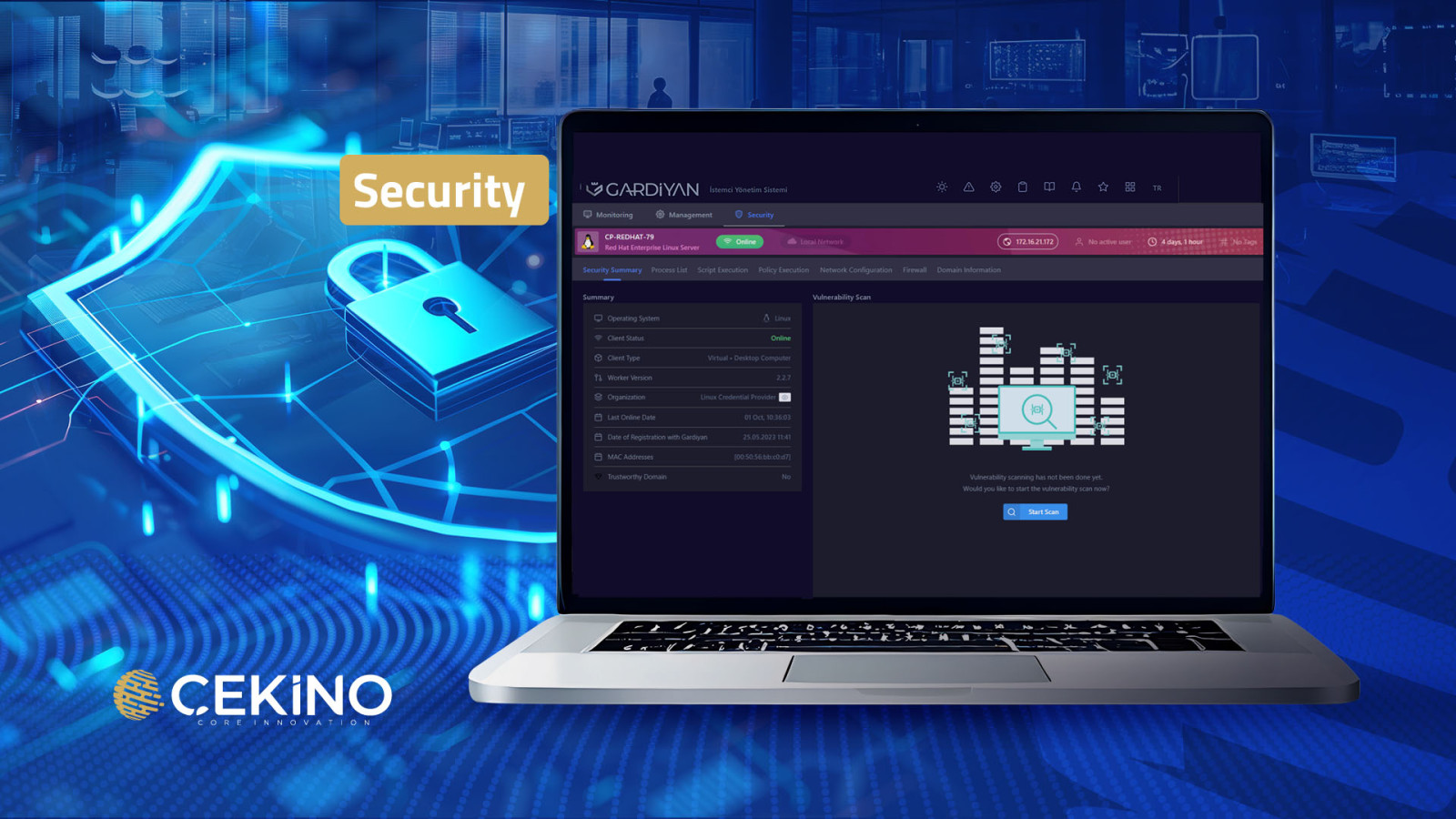GARDİYAN: Comprehensive Protection for Your Security
Gardiyan provides comprehensive monitoring and management solutions to ensure system and network security, offering proactive intervention and continuous protection against potential threats.


Overview
Gardiyan offers a comprehensive monitoring and management solution to ensure system and network security. It allows you to manage critical security components such as antivirus status, network connections, vulnerability scans, and firewall settings from a central location. Thus, you can protect your systems against potential security threats and effectively manage the security of all devices on the network.
Gardiyan helps you proactively detect threats to your systems and respond quickly. Features such as monitoring security updates, managing network configurations, and enforcing policies allow you to keep your systems at the highest level of protection. These comprehensive security management tools lighten the workload of IT teams and continuously keep your systems secure.
Gardiyan provides system administrators with full control, offering all the necessary tools to detect and resolve potential vulnerabilities. This ensures that your system security is always at the highest level and that the devices on your network operate smoothly.
Security Summary
The Agent periodically runs commands on the client to check the antivirus status. As a result of this process, information about whether antivirus protection is active and which antivirus application is protecting the client is displayed on the screen. The antivirus status report allows security managers to continuously monitor the level of protection of the system and take proactive measures against potential threats. Thus, the security and integrity of the system can be effectively managed.
LLDP (Link Layer Discovery Protocol) is a protocol used to collect and share connection information between network devices. This protocol allows detailed viewing of network connection information on the client. LLDP provides critical information such as device names, ports, and network devices to network administrators, enabling more effective management of network topology.
Vulnerability scans are critical for identifying security vulnerabilities in networks and systems. Fully integrated with vulnerability scanning products such as Nessus and OpenVAS, vulnerabilities are detected. Addressing these vulnerabilities is crucial for enhancing system security and preventing potential threats. It enables detailed examinations and timely implementation of necessary precautions.
Process List
A detailed list of processes running on the client is provided. The information in this list is received live from XMPP and includes details such as PID, Process Name, File Path, User, Start Time, Status, Memory Usage, and CPU Usage for each process. Additionally, processes can be monitored and terminated.
Run Script
The Run Script feature allows for the selection of a prepared script in the script execution section after being defined in the definitions section in 8 different desired languages. The script can be set to run either at a future date or periodically. When the Run button is clicked, a command is sent to the client via the XMPP service, and the script is executed. Under the sections of recently executed scripts, scheduled scripts, and periodic scripts, the name of the executed script, the user who executed it, and the execution date will be available. By clicking the details button, the content of the executed script and the feedback of the script can be viewed.
Network Configuration
The details of the network interfaces on the client are listed on this screen. IP configuration can be configured manually if desired. Additionally, an IP address that is configured manually can also be obtained automatically. These processes occur instantly by sending commands to the client via XMPP.
Firewall
The Firewall allows you to add new rules to the client's firewall. It is an important tool for controlling your client's network traffic. When adding a rule, information such as Protocol (TCP, UDP, ICMPv4), Allow, Remote Address, and Port Number should be filled out before clicking the add new rule button. Subsequently, the relevant rule becomes active on the client.
Updates
This screen allows you to view installed updates and monitor the update history. Regular updates are checked by communicating with the agent installed on the client to ensure the security and performance of the client.
Domain Information
The 'Computer' object information in the Domain Information section shows the characteristics of computers on the network and information related to the domain. This information is used by network administrators and system administrators to monitor and manage the status of computers on the network. It facilitates the management of computers on the network and provides information about the status of devices on the network. It is also used to monitor and manage the network configuration of computers.
Policy Application
The Policy Tracking screen allows viewing both computer-based and user-based policies in the application. This information is very valuable for a network administrator or system administrator. Policy Tracking provides the visibility and control necessary for network administrators and system administrators to increase the effectiveness of policies, ensure compliance, and enhance security.